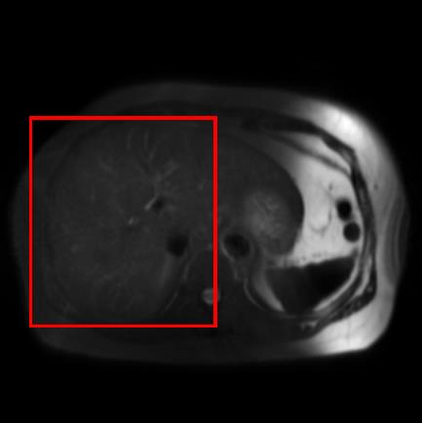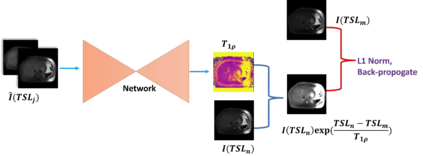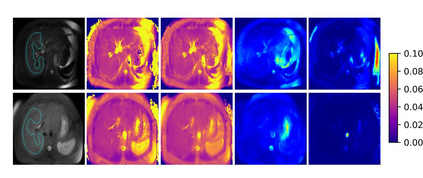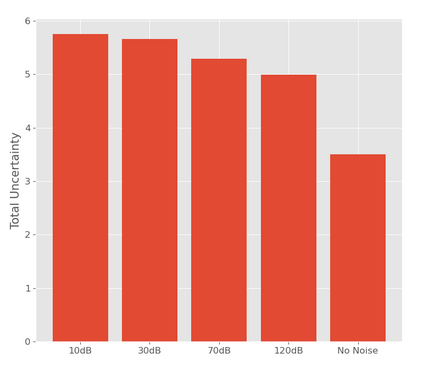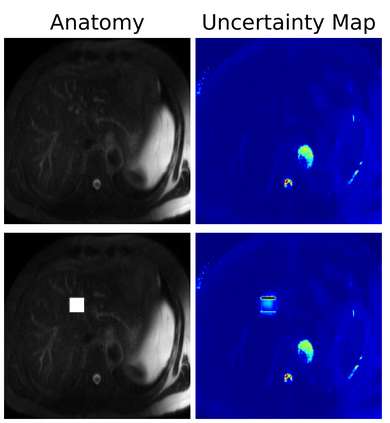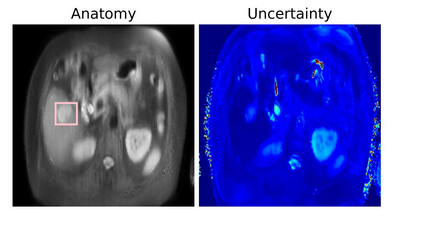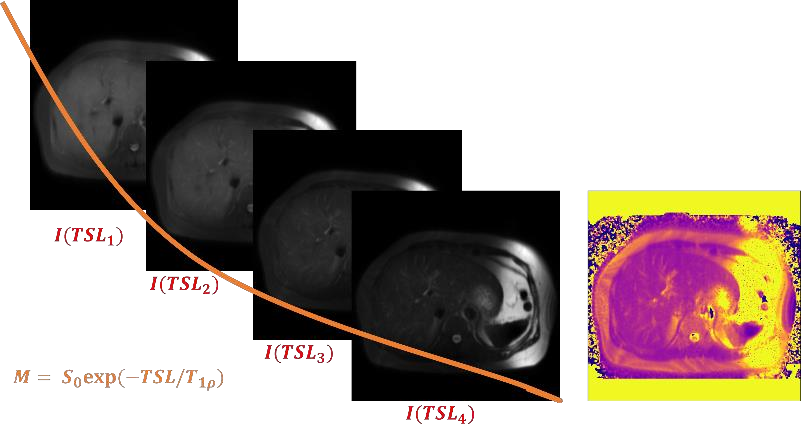$T_{1\rho}$ mapping is a promising quantitative MRI technique for the non-invasive assessment of tissue properties. Learning-based approaches can map $T_{1\rho}$ from a reduced number of $T_{1\rho}$ weighted images, but requires significant amounts of high quality training data. Moreover, existing methods do not provide the confidence level of the $T_{1\rho}$ estimation. To address these problems, we proposed a self-supervised learning neural network that learns a $T_{1\rho}$ mapping using the relaxation constraint in the learning process. Epistemic uncertainty and aleatoric uncertainty are modelled for the $T_{1\rho}$ quantification network to provide a Bayesian confidence estimation of the $T_{1\rho}$ mapping. The uncertainty estimation can also regularize the model to prevent it from learning imperfect data. We conducted experiments on $T_{1\rho}$ data collected from 52 patients with non-alcoholic fatty liver disease. The results showed that our method outperformed the existing methods for $T_{1\rho}$ quantification of the liver using as few as two $T_{1\rho}$-weighted images. Our uncertainty estimation provided a feasible way of modelling the confidence of the self-supervised learning based $T_{1\rho}$ estimation, which is consistent with the reality in liver $T_{1\rho}$ imaging.
翻译:$T$1\\\rho} 映射$T$T$1\\\rho} 是一个很有希望的量化的MARI 技术,用于对组织性质进行非侵入性评估。基于学习的方法可以从减少的$T$1\\\\rho} 加权图像中绘制$T%1\\rho} $T*1\\\rho} 美元,但需要大量高质量的培训数据。此外,现有的方法不能提供$T%1\\\\\rho} 估算值的信任度。为了解决这些问题,我们建议建立一个自监督的学习神经网络,利用学习过程中的放松限制来学习$T\\\\\\\\rho} $美元。基于学习过程的松动不确定性和清除性不确定性网络模拟$T\\\\\r} $1\rho} 我们用52个非酒精脂肪肝脏病患者收集的数据进行了实验。结果显示,我们的方法超越了我们目前以精确性估算值为基础的方法。


